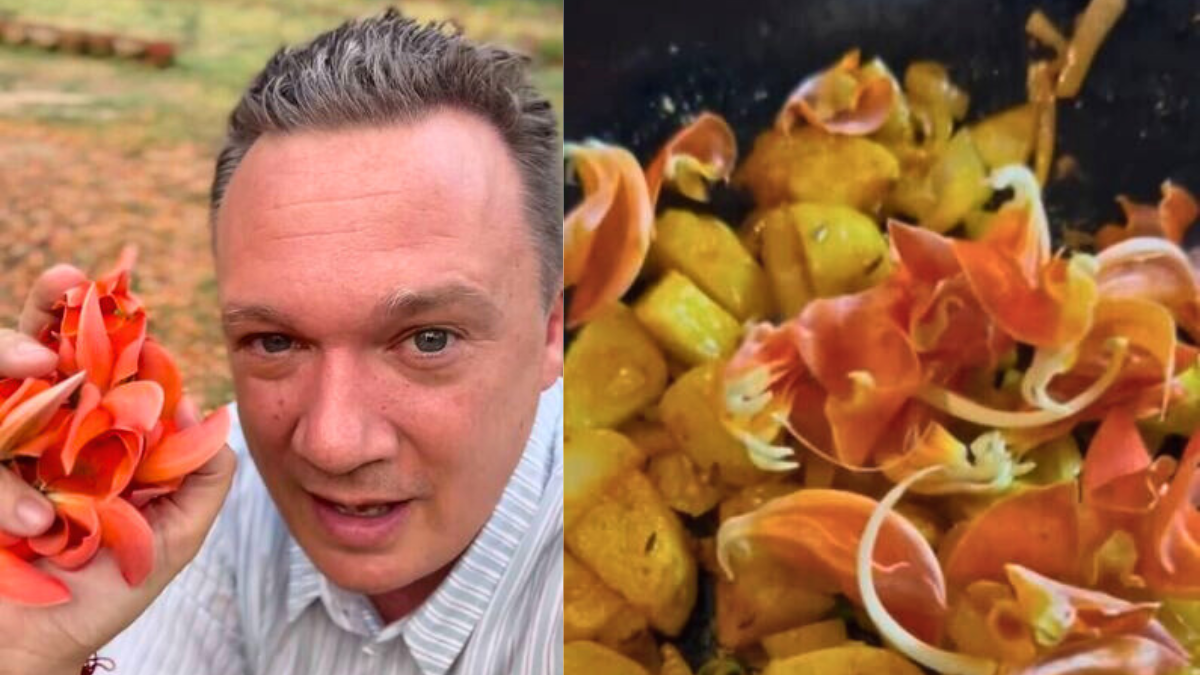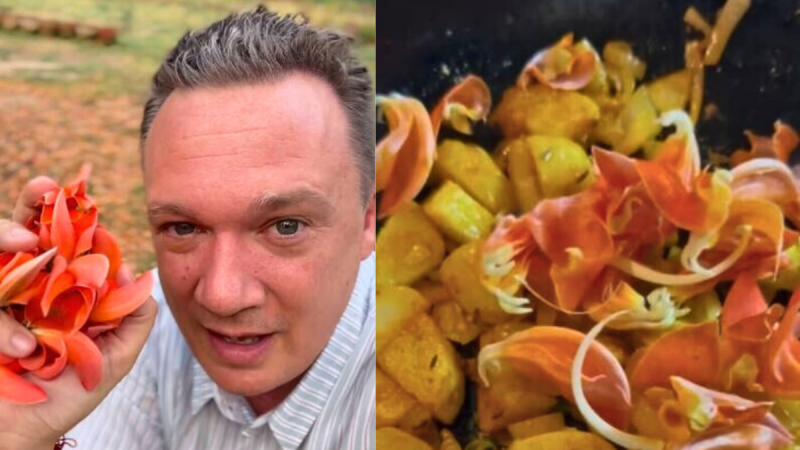Spring in India is a riot of colours—but if you spot the Palaash flower (also called Flame of the Forest) burning bright, it could mean more than just a pretty view. Recently, a creator named Nick Booger, who goes by the Instagram handle “indogenius,” went viral for his insightful video about the Palaash flower. In his video, he shares the regional wisdom surrounding the flower, linking its vivid display to a particularly intense summer ahead. This viral post has sparked widespread curiosity about the Palaash flower, its cultural significance, and its use in traditional recipes. Let’s delve deeper into this intriguing flower and the creator’s fascinating perspective.
Nick Booger’s Floral Forecast: How The Palaash Tells The Weather
View this post on Instagram
Instagram creator Nick Booger, known online as @indogenius, recently shared a short video featuring the brilliant orange-red blooms of the Palaash tree. In the video, Nick says in Hindi: “Palaash jitne laal, utni tapti dhoop is saal,” which translates to “The brighter the Palaash flowers, the harsher the summer ahead.”
It’s not just poetic. Nick connects this with phenology—the study of nature’s seasonal signs—claiming the trees themselves are sending a message about the coming heatwave. The reel captures him walking through a sunlit Delhi park, carefully collecting fallen blooms and hinting at his next post: “It’s time for some Palaash Phool ki Sabji—more on that later.” The palaash flower is deeply rooted in folklore, rituals, and even traditional medicine across India.
Also Read:
The Parrot Tree’s Secret: Why It’s Called Kimsukha
View this post on Instagram
In another video about the same tree, Nick affectionately called it “the jellybean tree”. Why the name? From a distance, the tree’s colourful, clustered blossoms resembled jelly beans. This intriguing name was inspired by the shiny and delightfully strange image. However, the tree’s botanical name is Kimsukha, which literally translates to “like a parrot” in Sanskrit, because the Palash Flowers have vivid, parrot-like colours.
Urging the audience to appreciate these beautiful flowers even more, he revealed that he had cooked a sabzi of these flowers and described the flavours as fragrant with a chewy texture. Would you like to try this at home? Here’s the recipe for you:
Also Read:
Ingredients:
- A handful of fresh Palaash flowers (rinsed and cleaned)
- 1 small onion (finely chopped)
- 2 cloves garlic (minced)
- 1 green chilli (sliced)
- 1/2 tsp cumin seeds
- 1/4 tsp turmeric powder
- Salt to taste
- 1 tbsp mustard oil
Method:
- Heat mustard oil in a pan until it begins to smoke lightly.
- Add cumin seeds and let them crackle.
- Toss in chopped onion, garlic, and green chilli. Sauté until soft.
- Add the Palaash petals and turmeric. Cook for 5–7 minutes until tender.
- Season with salt and stir well. Serve hot with chapatis or as a side to dal-rice.
Whether you’re a nature enthusiast, a home cook, or just curious about what the trees are whispering this season, Nick’s videos are a wonderful reminder that India’s landscapes have always been full of edible stories — if only we take the time to listen.
Cover Image Courtesy: indogenius/Instagram
For more such snackable content, interesting discoveries and the latest updates on food, travel and experiences in your city, download the Curly Tales App. Download HERE. First Published: April 17, 2025 3:22 PM




